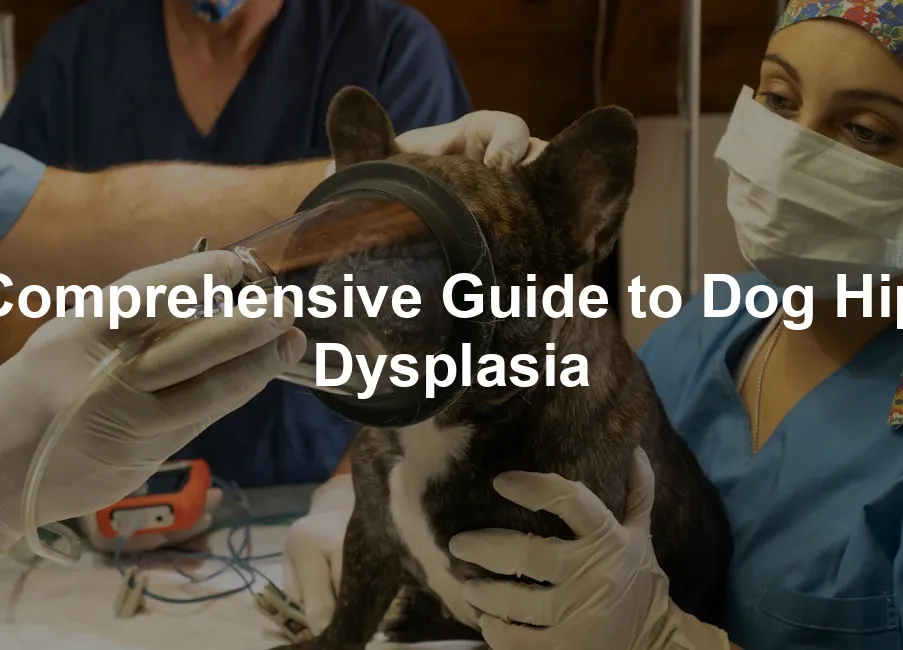Introduction
Hip dysplasia is a common orthopedic issue affecting dogs. This condition occurs when the hip joint doesn’t fit together properly. It significantly impacts a dog’s quality of life, causing pain and mobility issues. Understanding hip dysplasia is crucial for dog owners to provide proper care and support.
Summary and Overview
Hip dysplasia is a genetic condition characterized by hip joint abnormalities. It occurs when the ball (femoral head) doesn’t fit snugly into the socket (acetabulum). Over time, this misalignment leads to joint instability and degenerative joint disease (DJD), resulting in osteoarthritis. This condition is particularly prevalent among large breeds, such as German Shepherds, Golden Retrievers, and Rottweilers. Statistics show that about 20-30% of these breeds may be affected. Early diagnosis is vital to manage the condition effectively, as it allows for timely interventions that can enhance a dog’s quality of life.

To make sure your dog is comfortable while managing their condition, consider investing in a PetFusion Ultimate Dog Bed. This bed provides orthopedic support that can help alleviate some discomfort associated with hip dysplasia, allowing your furry friend to rest peacefully.
What Is Canine Hip Dysplasia?
Canine hip dysplasia develops during a dog’s growth phases. It begins with abnormal joint development, causing the femoral head to fit improperly in the acetabulum. In a normal joint, the femoral head fits snugly into the acetabulum, allowing smooth movement. In dysplastic hips, this fit is loose, leading to wear and tear on the cartilage and joint surfaces. This can cause pain and inflammation, eventually resulting in osteoarthritis. Studies indicate that approximately 10-15% of dogs may show signs of hip dysplasia by one year of age. Understanding these anatomical differences helps in recognizing the severity of the condition and planning appropriate treatment strategies.
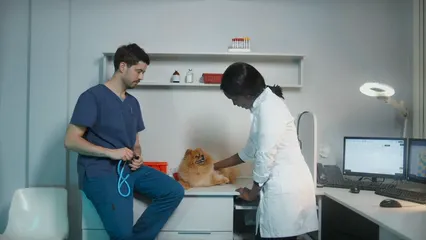
To keep your dog active and engaged, consider adding some fun to their routine with a KONG Classic Dog Toy. It’s perfect for keeping your pup mentally stimulated while being gentle on their joints.
For more information on this condition, check out our detailed guide on Understanding and Managing Canine Hip Dysplasia.
Causes of Hip Dysplasia
Genetic Factors
Hip dysplasia is often hereditary. Certain breeds are more prone to this condition. Genetic markers linked to hip dysplasia have been identified. Breeds like German Shepherds, Rottweilers, and Labradors are at higher risk. These dogs may inherit traits that contribute to joint laxity. This means their hip joints might not form correctly, leading to dysplasia. Understanding these inherited conditions can help pet owners make informed breeding decisions. Responsible breeding practices can reduce the prevalence of this painful condition in future generations.
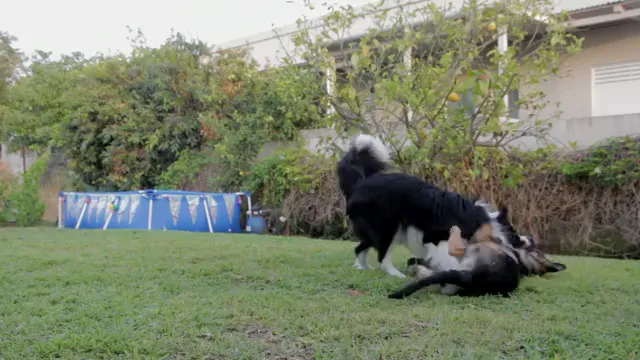
As a proactive measure, consider adding a joint supplement like Vet’s Best Hip & Joint Dog Supplement to your dog’s diet. This can help support their joint health and mitigate some of the effects of dysplasia.
Environmental and Lifestyle Factors
Nutrition and lifestyle play significant roles in hip dysplasia development. A balanced diet is crucial for bone and joint health. Puppies fed excessive calories can grow too quickly, increasing their risk. Obesity places extra stress on joints, exacerbating dysplasia symptoms. Regular, controlled exercise helps maintain a healthy weight and supports joint stability. Engaging in moderate activities, like walking or swimming, can strengthen muscles around the hip joint. Avoiding high-impact exercises during a dog’s growth phase is vital for preventing dysplasia. Proper care during puppyhood can lead to healthier adults.
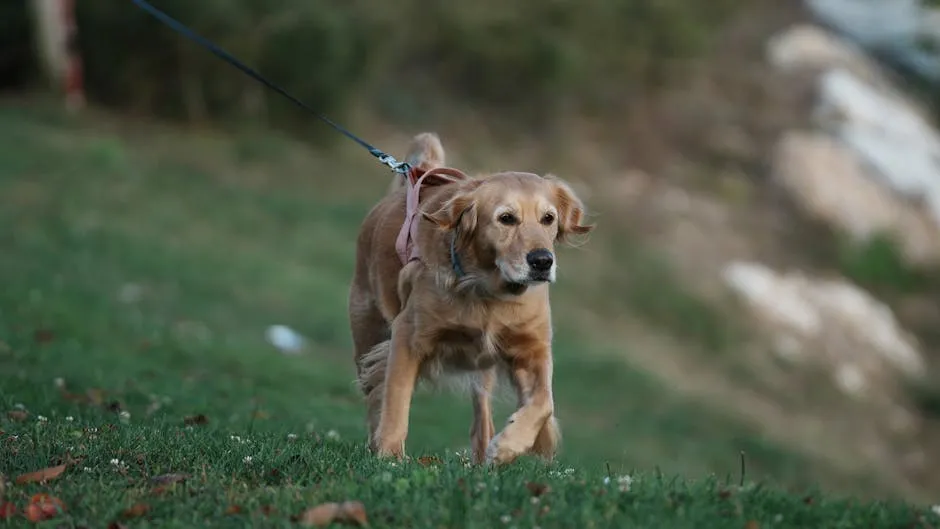
Speaking of exercise, a Dog Agility Training Equipment Set can be a fantastic way to keep your pup engaged while also being mindful of their joints. It encourages gentle movement and mental stimulation!
Symptoms of Hip Dysplasia
Recognizing the signs of hip dysplasia early is essential for effective management. Symptoms typically appear between six months and two years of age. Early signs may include a reluctance to run or play, and stiffness after rest. As the condition worsens, dogs may exhibit limping or a “bunny hopping” gait. You might notice decreased activity levels or difficulty climbing stairs. Behavioral changes, like increased irritability or reluctance to be touched near the hips, can also occur. Regular veterinary check-ups can help catch these issues early. Monitoring your dog’s mobility can lead to prompt diagnosis and treatment, enhancing their quality of life significantly.
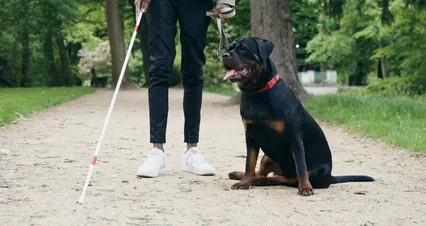
To assist with your dog’s mobility, consider a Blue Buffalo Life Protection Formula Dog Food. It provides the right nutrition to support joint health and overall well-being.
Diagnosing Hip Dysplasia
Veterinary Examination
When you suspect your dog has hip dysplasia, a veterinary examination is crucial. Your vet will start with a thorough physical assessment. They will manipulate your dog’s hind legs to check for looseness and pain. This manipulation helps identify any abnormal joint movement. Recognizing clinical signs is vital for diagnosis. Symptoms like reluctance to move or limping can indicate hip issues. Early detection allows for better management and treatment options. If you notice these signs, don’t wait to consult your veterinarian.
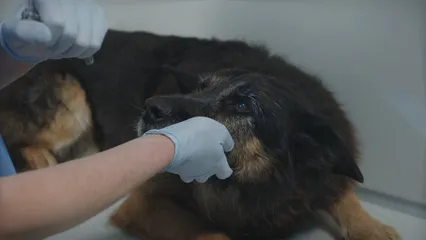
Imaging Techniques
Once a physical examination suggests hip dysplasia, imaging techniques confirm the diagnosis. X-rays are the most common method used to visualize the hip joints. The Orthopedic Foundation for Animals (OFA) and PennHIP are two well-known screening protocols. OFA requires dogs to be two years old, while PennHIP can be performed as early as four months. Both methods assess joint conformation and laxity. Interpreting these results helps understand the severity of the dysplasia. Radiography plays an essential role in guiding treatment plans effectively.
Treatment Options for Hip Dysplasia
Non-Surgical Approaches
Managing hip dysplasia often begins with non-surgical treatment methods. Weight management is crucial, as excess weight increases joint stress. A balanced diet and controlled feeding can help maintain an ideal weight. Physical therapy plays a significant role in strengthening muscles around the hip. This can improve mobility and reduce pain. Additionally, pain relief medications, such as NSAIDs, can help manage discomfort. Hydrotherapy is another excellent option, providing low-impact exercise. Joint supplements like glucosamine may also be effective. These conservative management strategies can significantly enhance your dog’s quality of life and mobility.
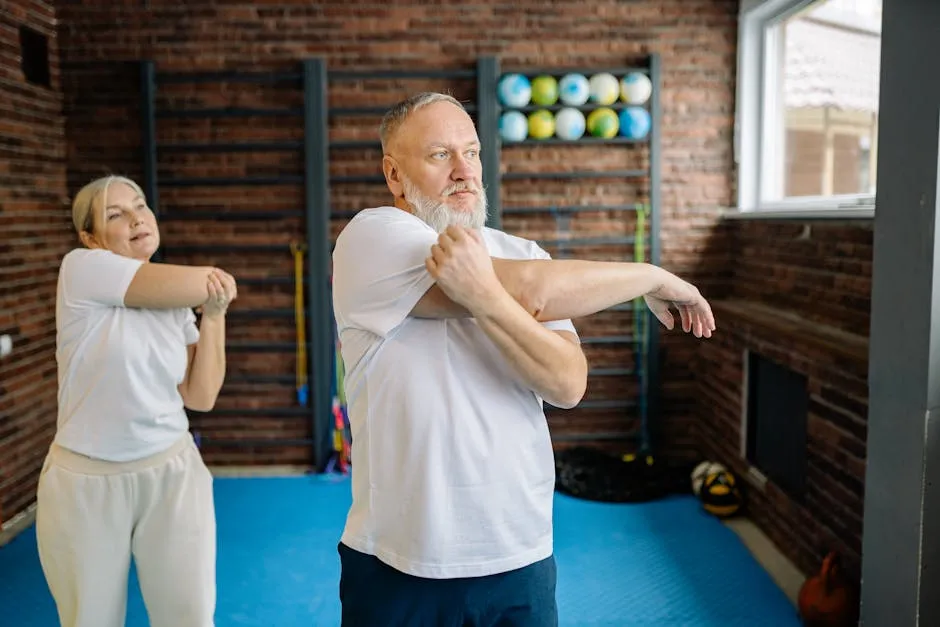
For optimal joint support, consider incorporating Dog Joint Supplement with Glucosamine into their routine. It’s a proactive way to support their joints and maintain mobility.
Surgical Interventions
When non-surgical treatments aren’t enough, surgery may be necessary for severe hip dysplasia. Several surgical options exist, each tailored to the dog’s specific needs. Total hip replacement (THR) is one of the most common procedures. This involves removing the damaged hip joint and replacing it with a prosthetic joint. Many dogs experience significant pain relief and improved mobility after this surgery.
Another option is femoral head ostectomy (FHO), where the head of the femur is removed. This procedure creates a “false joint” that can help alleviate pain, especially in smaller dogs. While FHO may not restore full function, many dogs adapt well and lead active lives post-surgery.
Recovery from these surgeries varies. After THR, dogs typically require several weeks of rest and controlled activity. Physical therapy may be recommended to assist with rehabilitation. For FHO, recovery can also take a few weeks, but many dogs return to their normal activities relatively quickly. Overall, surgical interventions can greatly enhance a dog’s quality of life, allowing them to enjoy activities they previously struggled with.

Preventing Hip Dysplasia
Preventing hip dysplasia starts with responsible breeding practices. Always choose breeders who screen for hip dysplasia in their breeding stock. This reduces the likelihood of passing on this genetic condition. Nutrition also plays a key role. Ensure your dog receives a balanced diet tailored for their size and age.
Controlled exercise is vital during a puppy’s growth phase. Avoid high-impact activities that could stress developing joints. Instead, focus on moderate exercise, like walking or swimming, to maintain a healthy weight. Early intervention and proper care can help promote joint health, potentially preventing hip dysplasia from developing.
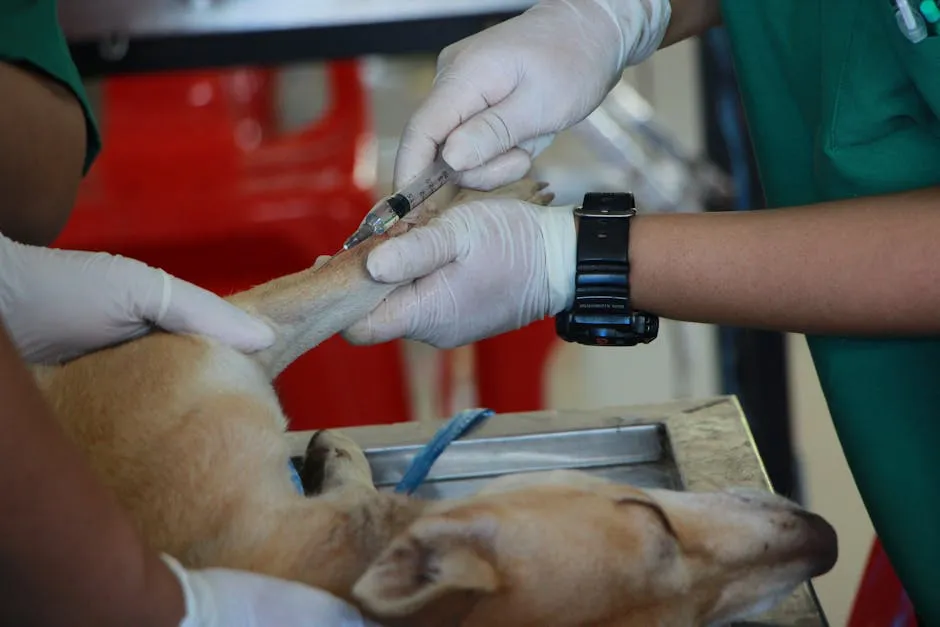
For those rainy days when outdoor activities are off the table, don’t forget to have a Dog Raincoat ready. Keeping your pup dry will help maintain their health and happiness!
Prognosis and Quality of Life
The prognosis for dogs with hip dysplasia can vary greatly. Factors like age, severity of the condition, and treatment options all play a role. Younger dogs typically respond better to intervention, especially if treated early.
With appropriate management strategies, many dogs live happy, active lives. Weight management, physical therapy, and medication can significantly improve a dog’s quality of life. Regular check-ups with your veterinarian are essential for monitoring the condition and making necessary adjustments to the treatment plan. By addressing hip dysplasia proactively, owners can help their furry friends thrive despite the challenges.

And while you’re at it, consider a Dog First Aid Kit for emergencies. Being prepared can make all the difference in a stressful situation!
Conclusion
In summary, hip dysplasia is a significant concern for many dog owners, particularly those with larger breeds. Early recognition of the condition is key. We discussed how hip dysplasia affects joint stability, leading to pain and mobility issues. Managing this condition through proper weight control, exercise, and veterinary care can greatly improve your dog’s quality of life. Regular check-ups with your veterinarian will ensure you stay informed about your dog’s health. Always consult your vet for guidance tailored to your specific dog’s needs, and remember, proactive management is crucial.
FAQs
What breeds are most susceptible to hip dysplasia?
Breeds like German Shepherds, Golden Retrievers, and Rottweilers frequently experience hip dysplasia. Larger breeds are genetically predisposed to this condition due to their joint structure. Mixed breeds can also suffer, especially those with larger ancestry.
Can hip dysplasia be prevented?
While not all cases can be avoided, responsible breeding practices play a vital role. Choose breeders who screen for hip dysplasia in their breeding stock. Additionally, ensuring a balanced diet and appropriate exercise during puppyhood can help minimize the risk.
What are the signs that my dog may have hip dysplasia?
Key symptoms include difficulty standing, reluctance to exercise, limping, and abnormal gaits like “bunny hopping.” Dogs may also exhibit stiffness, especially after resting, and decreased muscle mass in their hind limbs.
Is surgery always necessary for hip dysplasia?
Surgery isn’t always required. Many dogs respond well to non-surgical treatments like weight management and physical therapy. However, severe cases may necessitate surgical options such as total hip replacement or femoral head ostectomy.
How can I manage my dog’s hip dysplasia at home?
Focus on maintaining a healthy weight and providing low-impact exercises like swimming. Regular physical therapy sessions can also help strengthen the muscles around the hip joint, improving mobility and comfort.
What is the typical recovery time after hip dysplasia surgery?
Recovery times vary. After total hip replacement, dogs usually require several weeks of limited activity. Full recovery can take three to six months, depending on the individual dog’s health and adherence to rehabilitation protocols.
Are there alternative therapies for managing hip dysplasia?
Yes, alternative treatments include acupuncture, physical therapy, and hydrotherapy. These therapies can provide pain relief and improve mobility, complementing traditional medical treatments. Always consult your veterinarian before starting any alternative therapy.
Please let us know what you think about our content by leaving a comment down below!
Thank you for reading till here 🙂
All images from Pexels

